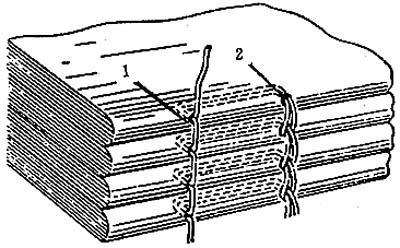The book blocks that have already been set up are connected in series along the creases in a sequence, and are locked together. This binding method is called sewing.
The sewing thread book is a traditional book method with a long history and high quality. It uses a line to make sewing along the folds of each booklet, and does not occupy the book. Book books that are bound are easy to flatten, and they are easy to read during reading. Books of various thicknesses can be bound, and their effects on gums and various external conditions are relatively stable. Therefore, the bookbinding staples have a high degree of firmness and a long service life. The disadvantage of the lock stitching method is that the sewing machine is generally a stand-alone operation. The more signatures in the book block, the greater the labor intensity of the sewing thread, and the production efficiency with other binding devices is not easy to balance, and it is difficult to achieve binding and linkage. Since there are two lines at the seams of each signature, the spine of the book block is thickened, and the expensive sewing thread is also consumed.
Lock stitching is a kind of staple method with high firmness and long service life. Bookbinding using bookbinding can be done in paperback books or hardcover books. At present, books with high quality requirements and durability are often used for sewing.
First, the lock line set method and process principle
There are two methods for manual sewing and mechanical locking. There are two types of lock stitches: flat lock and cross lock. Flat lock is divided into common flat lock and staggered flat lock.
1. Ordinary flat lock. It is the normal method of sewing without gauze on the spine. The common flat book block is shown in Figure 4-2. The yarn passes through the needle hole 1 and passes through the needle hole 2 along the inside of the fold of the signature. A coil (a live button) is formed on the outside of the signature so that the signatures are successively connected in series and locked to each other. The positions and distances of the order lines on the common flatlock spine are the same as each other. The yarns of the flat lock method are in the middle of the folds of the signatures, while the loops and knots are outside the signatures. At present, book books that use staple stitching are mostly processed in a flat-lock manner.

Figure 4-2 Ordinary flat lock
The process of ordinary flat lock is shown in Figure 4-3. In a normal flat lock, a threading needle, a wire pulling claw and a hooking wire needle constitute a group to complete the lock stitching process. When the signature moves into the lock stitch position, the bottom needle 3 moves upwards, and from the middle of the signature along the crease, all the staple holes are laid out from the inside as shown in Figure 4-3a. Then, the threading needle 4 and the hooking needle 5 are moved downward together so that the threading needle and the hooking needle penetrate the thread from the corresponding binding hole into the signature, and the needle retreats as shown in Fig. 4-3b. The threading claws 1 are moved from left to right to pull the yarn sleeve into double strands and feed the yarn into the hook grooves of the hooking needles as shown in Fig. 4-3c, d. The claws are then returned to their original position as shown in Figure 4-3e. Then, the threading needle and the hooking needle are driven to be lifted at the same time. At this time, the yarn hooked by the hooking needle is wound into a live buckle on the outside of the signature and then returned to the original position, as shown in Fig. 4-3f. This completes the process of stitching a poster.

Figure 4-3 Ordinary flat lock punching and threading process
1-Thread hooks 2 - Yarn 3 - Needle 4 - Threading needle 5 - Hook pin
The process of sewing the second signature is basically the same as that of the first post except that the hook needle is hooked from the second post and the clasp is trapped in the slip knot of the first post. Such a set forms a chain, Until the completion of a book lock line. When a book is locked, the machine is idling once. At this time, the coil from the last placard is also marked as live. The line is cut off as a book core.
The number of stitches in a book can be determined based on the size of the book block. General 16 open, large 32 open select 4 ~ 5 groups, 32 open books and magazines often use 3 groups, 64 open use 2 groups. Others can do the corresponding increase or decrease. After deciding on the number of needle groups, except for the distance between the head and the feet of 25 to 30 mm, the arrangement of the needles should be distributed as far as possible in the middle of the book.
(to be continued)
Non Adhesive Sticker,Self Adhesive Labels,High Tack Labels,High Tack Labels
Ningbo Leya Printing Co., Ltd , http://www.leya-thermaltransfer.com